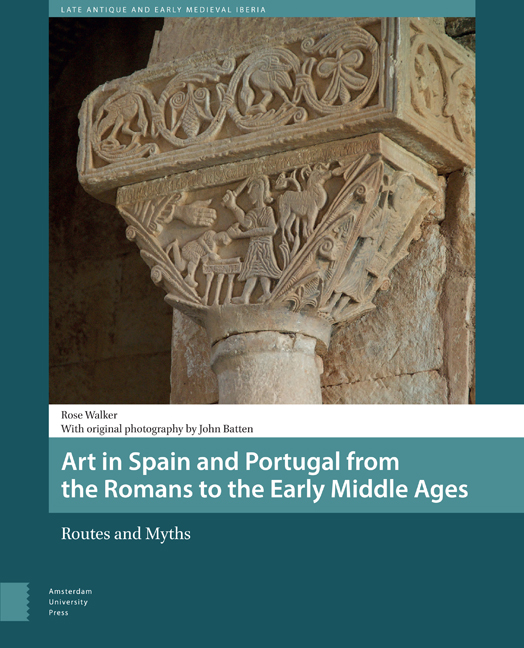Book contents
- Frontmatter
- Contents
- List of Illustrations
- Acknowledgements
- Conventions
- Abbreviations
- Introduction
- 1 The Lie of the Land: Art and Architecture Along the Roman Roads
- 2 Believing and Belonging: Late Antiquity and the Wider Mediterranean
- 3 The Visigothic Period: Fragmentation and Accretion
- 4 The Eighth and Ninth Centuries: Re-emergence and Invention
- 5 The Great Tenth Century
- 6 Dispersal After the Fall of the Caliphate
- 7 Trading Peace, Gold and Expertise, c. 1050-c. 1075
- 8 The Making of Romanesque: Reform and Synergy
- Epilogue
- Chronology 700-1100
- Bibliography of Cited Sources
- Index
1 - The Lie of the Land: Art and Architecture Along the Roman Roads
Published online by Cambridge University Press: 12 February 2021
- Frontmatter
- Contents
- List of Illustrations
- Acknowledgements
- Conventions
- Abbreviations
- Introduction
- 1 The Lie of the Land: Art and Architecture Along the Roman Roads
- 2 Believing and Belonging: Late Antiquity and the Wider Mediterranean
- 3 The Visigothic Period: Fragmentation and Accretion
- 4 The Eighth and Ninth Centuries: Re-emergence and Invention
- 5 The Great Tenth Century
- 6 Dispersal After the Fall of the Caliphate
- 7 Trading Peace, Gold and Expertise, c. 1050-c. 1075
- 8 The Making of Romanesque: Reform and Synergy
- Epilogue
- Chronology 700-1100
- Bibliography of Cited Sources
- Index
Summary
This chapter will set out the geography and geology of Hispania, as these are fundamental to any understanding of its history and art history. It will use the framework of the Roman roads to engage with the landscape, with the resources, and with the communication routes. Coasts and rivers brought life to the varied terrain, cutting through the barriers formed by the mountain ranges, and the major Roman roads often followed them. Frequently based on tracks that linked earlier settlements, the roads facilitated the movement of troops and equipment in a long process of occupation. Once territory was secured, a denser network of routes was used for the extraction of resources, especially precious metals, and to support trade in olive oil and wine. Tracing the bones and veins of the peninsula, these roads linked the centres of power and wealth. Many of the routes ran close to local quarries, usually no more than 30 km from the towns, and provided rubble and lime for foundations, as well as ashlar blocks for walls. Both architectural elements and statues were sculpted from these local materials. Relatively small amounts of imported stone, mostly Italian or Greek marbles, arriving by sea or river, decorated provincial capitals. Statues – and later sarcophagi – were also imported, alongside a range of luxury goods. The legacy of the Roman material will be important in this book, so possible survivals, demolition and restoration all need to be borne in mind. Although in most cases only foundations can be seen today, many buildings remained standing long after the end of Hispania as a Roman province. Over later centuries, structures were plundered for their ashlar masonry, and above all for their marble, leaving the concrete under-structure exposed to view. These stones and decorative elements often formed new buildings. As a result the Roman layer does not form a static body of material; instead it has been manipulated, re-used, re-carved, and re-located.
The Via Herculea: Iberians, Greeks, Carthaginians and Romans
As part of their activities across the Mediterranean, Phoenicians and Greeks had established trading centres on the east and south coasts of the peninsula. Traces of the former are evident in Málaga, Huelva, and Cádiz, and the Greek settlements on the northeast coast often retained their character into the Roman period.
- Type
- Chapter
- Information
- Art in Spain and Portugal from the Romans to the Early Middle AgesRoutes and Myths, pp. 31 - 64Publisher: Amsterdam University PressPrint publication year: 2016



